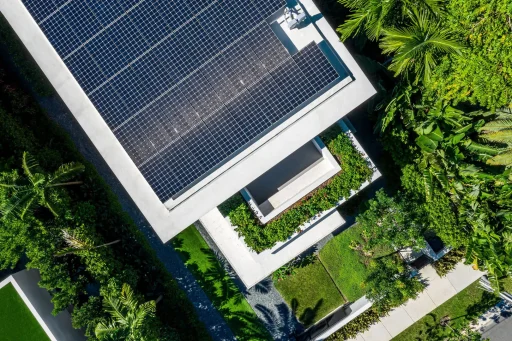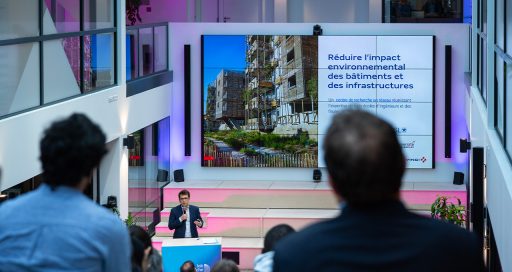Not only does Brazil enjoy substantial reserves of offshore oil, it also shows vast potential in terms of renewable energy sources. But to realize this potential, the “continent-country” will have to invest in its infrastructure.
![]()
Fifteen times the size of France and as big as a continent, Brazil presents a mixed energy picture, characterised by its geography and contrasting abundant resources – both fossil and renewable. “The point of energy generation is often located far from the point of consumption,” remarks Dominique Ferreira, CEO of the VINCI Energies Brazil division. “The considerable distances involved in delivering electricity make transmission, and therefore access to energy, a critical issue.”
Eighty percent of the Brazilian population is concentrated in the country’s coastal areas, and dispersed communities can remain cut off, without power, for a long time, as in the Amazon rainforest. When looking at the geography, Brazil’s large reserves of oil are located offshore, more than 100 km off the coast and at depths of over 5,000 m.
The country has a vast supply of fossil fuels. Its primary energy resource is oil, with extraction from offshore platforms set to grow sharply. In 2016, black gold accounted for 47.4 % of Brazil’s energy generation and 38.4 % of consumption. Natural gas is another abundant resource, covering 72 % of consumption.
Potential renewable energy sources
To drive its energy transition, Brazil can rely on extensive potential sources of renewable energy. Ranked third worldwide in “green” electricity generation, it is especially active in the fields of hydropower and biomass. These two resources alone mean that the country’s recorded CO2 emissions are 54 % lower than the global average.
Indeed, Brazil, which has undertaken to cut its greenhouse gas emissions by 43 % by 2030 (compared to 2005 levels) as part of COP 21, is a pioneer in biofuels, and biomass accounts for 30 % of energy consumption. At 11.5 %, hydropower accounts for less, but it contributes to the country’s decarbonisation rate, which exceeds 45 %. Hydropower is generated by giant dams like the Itaipu dam on the Paraná River, the world’s second largest power plant in terms of installed capacity (more than 90 TW per year), and by smaller structures like the cluster of dams refurbished by VINCI Energies brand Omexom on behalf of national distribution company Enel.
Work on these structures involved “upgrading electrical systems, in particular instrumentation and control,” says Ferreira. “Automation and digitisation have helped reduce manual tasks and give Enel head office back control.”
Improving access to electricity thanks to solar and wind power
Because populations living in remote regions are so dispersed, Brazil decided to develop distributed power generation systems and install micro-grids that integrate photovoltaics and wind power. As part of this initiative, Omexom has deployed hundreds of mini solar plants in the south of Belem.
Wind power also contributes towards improving access to electricity and indeed towards optimising the energy mix. Its potential is estimated at 350 GW, and generation is concentrated in the north-east of the country (in the states of Pernambuco and Bahia), where winds are favourable but demand is limited. This distortion means delivering electricity where it is required, thousands of kilometres to the south, in the state of Minas Gerais and the Rio region.
“That’s one of the challenges in the country,” says Ferreira. “A national network must be built to increase transmission capacity and secure delivery. The poor quality of existing power lines can lead to blackouts.”
In 2009, due to harsh weather conditions, Brazil experienced a massive power outage after the failure of three national grid HV transmission lines leading from the Itaipu hydroelectric dam on the border with Paraguay. Some 90 million people (out of a population of 200 million) in Brazil were left without power. Around 90 % of Paraguay’s territory was also affected by the blackout.
“Brazil has a green energy matrix in terms of electricity generation”
Brazil has been involved since 1999 in a campaign to build and strengthen its national network with the help of Omexom, which is rolling out 1,000 km of 230 KV and 500 KV power lines. Demand in the country is considerable, since some 50,000 km of extra-high-voltage lines must be installed in the next 10 years!
Green matrix
Overall, “Brazil has a green energy matrix in terms of electricity generation,” says Dominique Ferreira, listing the various sources: 65 % comes from hydropower, 20 % from solar, wind and biomass combined, and just 15 % from thermal and nuclear power. The share of renewable energies in the energy mix increased from 39.4 % in 2014 to 41.2 % in 2015.
But he warns: “Studies point to the fact that while Brazil is seeing a return to economic growth, installed generation capacity will be insufficient.” With its energy consumption set to double by 2030, the country will undoubtedly have to accelerate the expansion of its infrastructure, both for oil – by building new offshore platforms – and for electricity, all the while pursuing its decarbonisation targets.
10/10/2019





